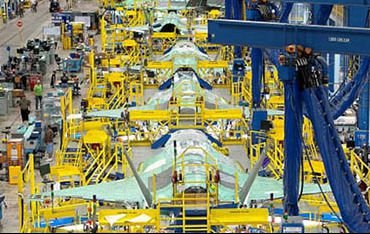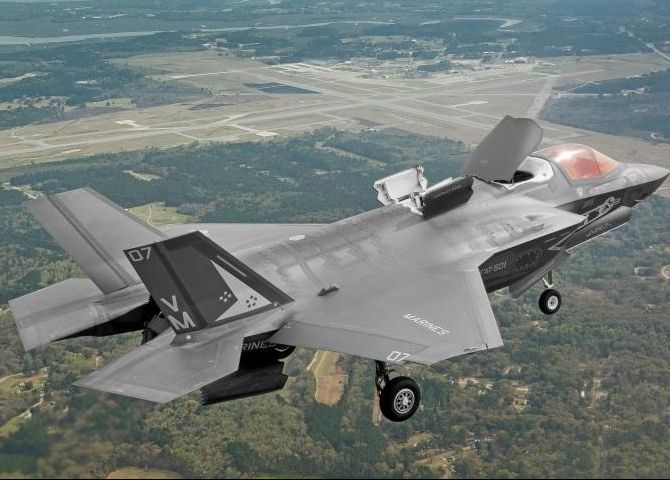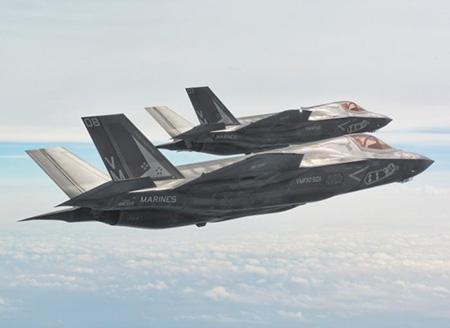Fierce attack on the F-35, a few hours after the (now discounted) Initial Operational Capacity for the Marine Corps, in the online version of the National Review, a fortnightly New York based in 1955. For the magazine, the US is venturing into a dead-end street, considered the ruin of the American military system. "Has anyone forgotten the phrases of General Charles Davis, when he claimed that the F-35 was convicted the same day the contract was signed?"
The National Review lists the initial estimates, dated 1994, for the new JSF. The 35 F-1994 would have to cost $ 28 for the Air Force, $ 35 for the Marine Corps and $ 38 for the Navy. With today's change, those estimates would have been of 45 million for the aircraft that would have equipped the Air Force until it came to the Navy version that would cost 61 millions of dollars. "In the 2015, however, as calculated by the Congressional Research Service, the unit cost of an F-35 would be approaching that of an F-22."

The Pentagon has always stated that unit costs are related to the low initial production rate (LRIP) and that the learning curve will lead to lower costs in the near future.
"Do we have to believe this story? Cost reduction depends on a definitive design and a stable production process that meets the standards of control. We know that the F-35 will not have a definitive design at least for the next few years, while for the production process, as demonstrated in a report by the GAO last May, the matter is even more serious. Only the 40% of the production processes necessary for the F-35 meet the statistical standards ".
According to the GAO, the ideal standard would be to obtain the 100% of critical production processes by the start of initial production which, as we know, started in 2011.
"For the F-35 these rules do not seem to apply. They change during construction or ignore them altogether. With LRIP design and production not even close to stability, talking about price reduction now is a lie, a lie ".
 In a September report last year, the GAO confirmed (as stated by the Pentagon) that on average an F-35 would cost about 32 thousand dollars per hour. However, the GAO, however, stressed that this estimate would not take into account other factors, underestimated by the Joint Program Office. "They did not take account of operations and support costs such as unplanned maintenance, inspections and the entire logistics".
In a September report last year, the GAO confirmed (as stated by the Pentagon) that on average an F-35 would cost about 32 thousand dollars per hour. However, the GAO, however, stressed that this estimate would not take into account other factors, underestimated by the Joint Program Office. "They did not take account of operations and support costs such as unplanned maintenance, inspections and the entire logistics".
The JPO's estimate - they wrote from the GAO - is not reasonable, because it does not take into account the determining factors. "Given the total unreliability of the costs and its 30 million lines of source code, we could easily deduce that the average cost of an hour of flight of the F-35 approaches that of the F-22, which has only about 2 million lines of source code ".
According to these calculations, the F-35 would cost 68 thousand dollars on average per hour of flight.
The domain on the skies
"The F-35, which operates as a stealth aircraft, will use its powerful interception radar to launch its long-range missiles, destroying enemies with impunity." This is the same conceptual logic of the F-22 which is based, therefore, on three assumptions: stealth, a powerful radar and extremely reliable long-range missiles that should guarantee the elimination of the target in a scenario with very high level countermeasures.
 "Today we know that it would not be prudent to launch the F-35 against Russian or Chinese fighters. The current F-35 technology, at the right price, could have changed the fate of a battle, but only then years ago. Today our rivals hold technologies that nullify the hypothetical advantages of the F-35. If the F-35 collided with a Su-30 (advanced fourth-generation fighter) it would probably not escape. And despite everything, we continue to invest in this car: it's as if the government continued to put lipstick on a pig ".
"Today we know that it would not be prudent to launch the F-35 against Russian or Chinese fighters. The current F-35 technology, at the right price, could have changed the fate of a battle, but only then years ago. Today our rivals hold technologies that nullify the hypothetical advantages of the F-35. If the F-35 collided with a Su-30 (advanced fourth-generation fighter) it would probably not escape. And despite everything, we continue to invest in this car: it's as if the government continued to put lipstick on a pig ".
The current United States doctrine is based on the domain in the field of BVR (Beyond Visual Range), but even this theory is taken apart from the National Review.
"Australia has conducted studies on the BRV capabilities of the F-35, demonstrating that in a close combat the F-35 would be defeated by the Su-35S with a ratio of 10 to 1. We dare not imagine what could happen if one day, the F-35 without support from the Raptors, were to collide with the Russian PAK T-50, more powerful, agile, faster and better armed ".
The analysis, in some ways perhaps too pessimistic, tells the truth about the load capacities of the two fighters. The T-50, can also carry three times the missiles of the F-35 and it is not said that they are inferior to the western ones.
Concluding from National Review: "After hundreds of billions of dollars, we still have to figure out what the F-35 will be able to do. For the dollars spent to buy 2457 F-35, we could have bought a powerful mix of 5.000 fighters. Yet despite the F-35 program disaster, the US Congress continues to fund the project. This can be partially explained by the fact that the closure of the program will cost tens of thousands of jobs, although it should be noted that the vast majority of workers, around 70 per cent, are concentrated in just five states. Lockheed Martin's estimate for 125.000 jobs is also extremely high. The overall credible impact is of 50-60.000 workers. Where will the F-35 take us? Too much pride, money, reputation and emotions are involving the program. If it had been a demonstrator, the F-35 technology would have been implemented in different platforms, but this was not the case. The biggest threat to US military power is called F-35. "
Franco Iacch

(photo: Lockheed Martin)












